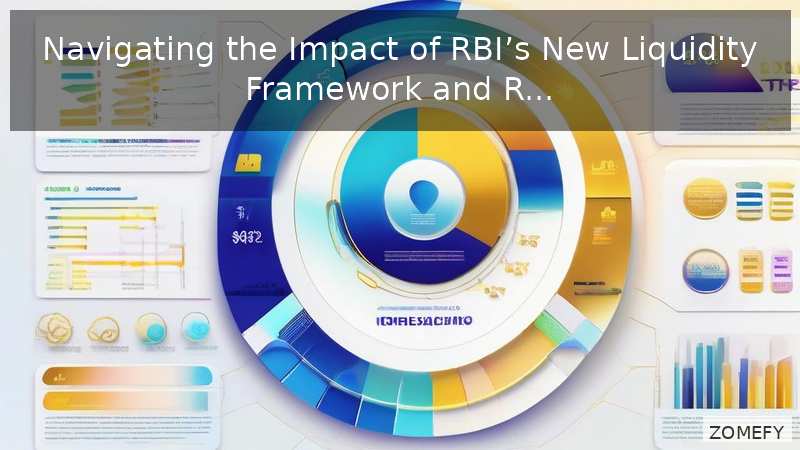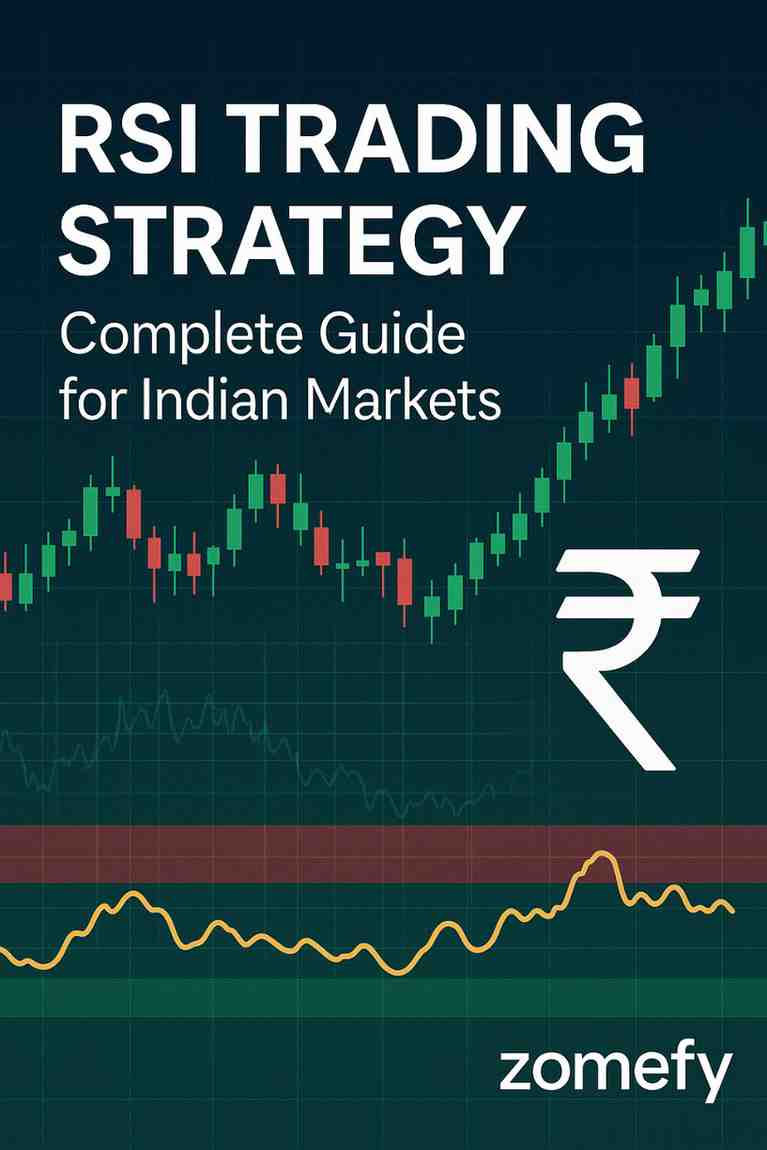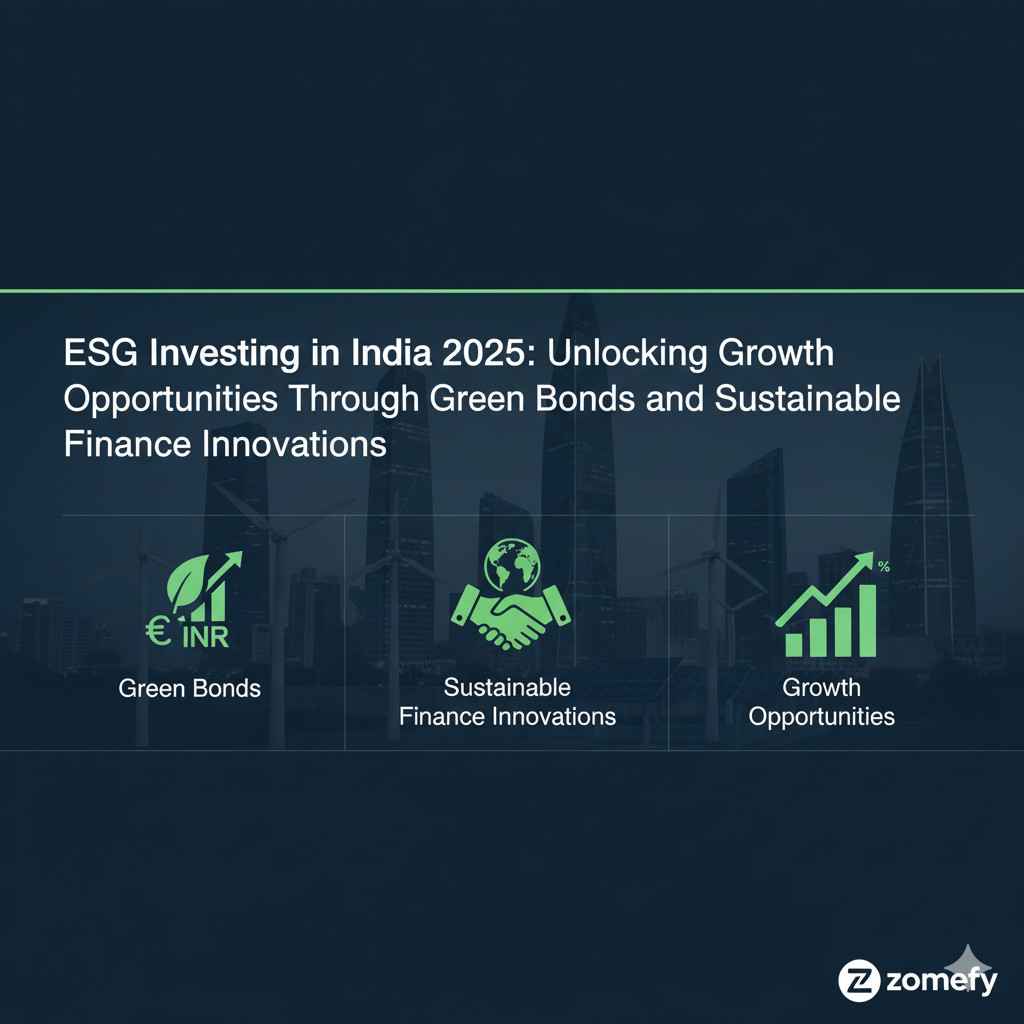Nifty50 Equity Research 2025: Analyzing the November Market Dip Amid Global Headwinds & India-US Trade Deal Speculation
The Indian equity market, represented by the Nifty50 index, has entered November 2025 on a cautious note.
Nifty50 Equity Research 2025: Analyzing the November Market Dip Amid Global Headwinds & India-US Trade Deal Speculation
What You Can Do Next
- Read the full article for complete insights
- Save for later reference
- Share with others learning about this topic
Image not available
The Indian equity market, represented by the Nifty50 index, has entered November 2025 on a cautious note. After a robust October rally, the benchmark index opened lower on Monday, with the Nifty50 slipping below 25,700 and the Sensex down over 200 points at the open, reflecting heightened volatility and weak global cues[2]. This dip comes amid growing concerns over global macroeconomic headwinds—including persistent inflation in developed markets, fluctuating crude prices, and uncertainty around US Federal Reserve policy—as well as renewed speculation around a potential India-US trade deal, which could reshape export-driven sectors. For Indian retail investors and financial professionals, understanding the drivers of this market movement, the underlying fundamentals of key Nifty50 constituents, and actionable strategies to navigate uncertainty is critical. This article provides a detailed, data-driven analysis of the current market environment, highlights trending Indian stocks, and offers practical insights for portfolio positioning in volatile conditions.
Market Overview: November 2025 Nifty50 Dip in Context
The Nifty50 index, which tracks the performance of 50 large-cap Indian companies across key sectors, opened November 2025 at 25,650.70, down 71.40 points or 0.28% from the previous close[3]. This follows a strong October rally, during which the index gained over 5% month-on-month, buoyed by robust quarterly earnings and positive auto sales data. However, the momentum has stalled as global risk-off sentiment, driven by fears of a prolonged high-interest rate environment in the US and Europe, has weighed on Indian equities[1][2].
Key Data Points: - Nifty50 Open (03-Nov-2025): 25,650.70[3] - Sensex Open (03-Nov-2025): Down over 200 points[2] - Market Capitalization (Nifty50): ₹467.67 lakh crore[3] - Sectoral Performance:** PSU banks and realty stocks rallied, while private banks and FMCG stocks lagged[1]
Global vs. Domestic Drivers
Factor | Global Impact | Domestic Impact |
|---|---|---|
| US Fed Policy | Risk-off in EM equities | FII outflows, INR volatility |
| Crude Oil Prices | Inflationary pressure | Current account, fiscal deficit concerns |
| India-US Trade Deal | Potential export boost | Sector-specific rally (IT, Pharma, Auto) |
| Domestic Earnings | Limited | Stock-specific moves, index support |
Actionable Insight: - Monitor FII flows: Sustained foreign institutional investor (FII) selling could prolong the correction. - Sector rotation: Consider shifting exposure to domestically focused sectors (PSU banks, realty) and export-oriented stocks (IT, Pharma) if trade deal prospects improve. - Volatility hedging:** Use Nifty options or sectoral ETFs to hedge against short-term swings.
Trending Indian Stocks: Earnings, News, and Price Action
Several Nifty50 constituents are in focus due to recent earnings, corporate actions, or regulatory developments. Below is a snapshot of key companies driving market sentiment as of early November 2025.
Company | Sector | Recent News | Market Cap (₹ Cr) | P/E Ratio | Price Target (₹) |
|---|---|---|---|---|---|
| Reliance Industries | Energy, Retail | Strong refining margins, retail expansion | 15,45,230 | 24.5 | 2,850 |
| ICICI Bank | Banking | Healthy loan growth, NIM expansion | 7,20,000 | 18.2 | 1,050 |
| Infosys | IT | Deal wins, US growth outlook | 6,50,000 | 25.8 | 1,750 |
| HDFC Bank | Banking | Asset quality stable, deposit growth | 12,00,000 | 20.1 | 1,650 |
| Bharti Airtel | Telecom | ARPU growth, 5G rollout | 5,80,000 | 32.4 | 1,100 |
Recent Developments: - PSU Banks: Rally driven by improving asset quality and government focus on capex; SBI, Bank of Baroda in spotlight[1]. - Realty Stocks: DLF, Godrej Properties gain on strong festive sales and inventory clearance. - FMCG: HUL, ITC under pressure due to muted volume growth and inflation in input costs. - Auto:** Maruti, Tata Motors supported by monthly sales beat, but global slowdown fears cap upside.
Investment Perspective: - Quality large-caps: Reliance, ICICI Bank, Infosys offer resilience with strong balance sheets and sector leadership. - Value picks: PSU banks and select realty stocks may offer tactical opportunities if domestic growth sustains. - Avoid:** Overvalued FMCG and export-heavy sectors until global clarity emerges.
Sectoral Analysis: Valuation, Growth, and Risk
A granular look at Nifty50 sector performance reveals divergent trends. Below is a comparative analysis of key sectors by valuation, growth, and risk metrics.
Sector | P/E Ratio | P/B Ratio | Dividend Yield (%) | 1-Year Return (%) | Key Risks |
|---|---|---|---|---|---|
| Banking | 18.5 | 2.8 | 1.8 | 22.4 | NIM compression, asset quality |
| IT | 25.2 | 6.1 | 1.2 | 15.6 | Global slowdown, wage inflation |
| FMCG | 42.7 | 12.3 | 1.0 | 8.2 | Input cost pressure, volume growth |
| Energy | 14.8 | 2.1 | 3.5 | 28.9 | Crude volatility, refining margins |
| Realty | 23.6 | 3.5 | 0.5 | 35.7 | Interest rate sensitivity, inventory |
Sectoral Insights: - Banking: Attractive valuations, but monitor credit growth and NIM trends. - IT: Growth moderating; selective stock picking advised. - FMCG: Expensive; wait for better entry points. - Energy: High dividend yield, but exposed to global crude moves. - Realty:** High beta; suitable for aggressive investors with a 12–18 month horizon.
Pros vs Cons Table: Sector Allocation
Pros | Cons |
|---|---|
| Banking: Strong balance sheets, credit growth | IT: Global demand uncertainty |
| Energy: High dividend yield, government support | FMCG: Expensive, volume pressure |
| Realty: Festive demand, inventory clearance | Realty: Interest rate sensitivity |
India-US Trade Deal Speculation: Sectoral Implications
Market chatter around a potential India-US trade deal has intensified, with sectors like IT, Pharma, and Auto likely to benefit from improved market access and reduced tariffs. However, the deal’s contours remain unclear, and investors should focus on companies with proven export capabilities and scalable operations.
- Build a basket of export-oriented stocks with strong fundamentals and diversified client bases. - Hedge currency risk using RBI-permitted derivatives or ETFs. - Stay updated on official announcements to avoid speculative bubbles in sensitive sectors.
Historical Performance & Risk-Return Analysis
A 20-year analysis of Nifty50 returns shows the index has delivered CAGR of ~12% in INR terms, with periodic drawdowns during global crises (2008, 2020)[4]. The current dip is modest compared to past corrections, suggesting a potential buying opportunity for long-term investors with adequate risk appetite.
Period | Nifty50 CAGR (%) | Max Drawdown (%) | Recovery Time (Months) |
|---|---|---|---|
| 2005–2010 | 14.2 | -58.3 | 28 |
| 2010–2015 | 8.7 | -28.3 | 18 |
| 2015–2020 | 10.1 | -38.8 | 22 |
| 2020–2025 | 16.4 | -35.2 | 14 |
Key Takeaways: - Long-term compounding works: Systematic investment in Nifty50 index funds/ETFs has historically rewarded investors. - Volatility is a feature, not a bug: Use corrections to accumulate quality stocks at reasonable valuations. - Diversify across sectors** to mitigate company-specific and sectoral risks.
Risk-Return Table: Nifty50 vs Sectoral Indices
Index | 5-Year CAGR (%) | Standard Deviation (%) | Sharpe Ratio |
|---|---|---|---|
| Nifty50 | 14.8 | 18.2 | 0.82 |
| Nifty IT | 13.5 | 20.8 | 0.68 |
| Nifty FMCG | 10.2 | 15.6 | 0.65 |
Actionable Insight: - For conservative investors: Allocate 60–70% to Nifty50 index funds, 20–30% to sectoral/thematic funds, and 10% to fixed income. - For aggressive investors:** Consider sector rotation and stock-specific strategies based on earnings momentum and valuation.
Regulatory & Compliance Considerations for Indian Investors
Indian markets are governed by SEBI regulations, which emphasize transparency, investor protection, and fair market practices. Key recent developments include stricter insider trading norms, enhanced disclosure requirements for promoter holdings, and the introduction of T+1 settlement for equities.
Recent Regulatory Updates: - T+1 Settlement: Full rollout expected by December 2025, improving liquidity and reducing counterparty risk. - Insider Trading: SEBI has tightened norms around unpublished price-sensitive information (UPSI). - ESG Disclosures:** Mandatory for top 1,000 listed companies from FY26, impacting sectors like energy, metals, and manufacturing.
Compliance Checklist for Investors: - KYC Updated: Ensure your KYC is current with your broker and depository participant. - Taxation: Understand STT, LTCG, and dividend distribution tax implications. - Demat Mandate:** All equity investments must be held in demat form as per SEBI rules.
Pros vs Cons: Regulatory Environment
Pros | Cons |
|---|---|
| Enhanced transparency and investor protection | Increased compliance burden for companies |
| Faster settlement (T+1) | Adjustment period for market participants |
| ESG focus aligns with global trends | Short-term cost pressure for ESG compliance |
Actionable Investment Strategies for November 2025
Given the current market environment, here are actionable strategies for Indian retail investors and financial professionals:
Core Portfolio Construction - Nifty50 Index Funds/ETFs: Allocate 50–60% to passive vehicles for broad market exposure and cost efficiency. - Sectoral/Thematic Funds: 20–30% in banking, IT, or consumption themes based on risk appetite. - Direct Equity:** 10–20% in high-conviction stocks with strong fundamentals and reasonable valuations.
Tactical Moves - Sector Rotation: Shift from expensive FMCG to reasonably valued banking, energy, and select realty stocks. - Export Themes: Add IT and Pharma stocks if India-US trade deal prospects improve. - Defensive Plays:** Consider healthcare and utilities for stability during volatility.
Risk Management - Stop-Loss Discipline: Set stop-loss levels at 8–10% below purchase price for direct equities. - Diversification: Avoid over-concentration in any single stock or sector. - Rebalancing:** Review and rebalance portfolio quarterly to maintain target asset allocation.
Monitoring Checklist - FII Flows: Track daily FII activity for market direction cues. - Earnings Calendar: Monitor quarterly results for portfolio companies. - Global Events:** Stay updated on Fed policy, crude prices, and geopolitical developments.
Example: Model Portfolio for Moderate Risk Investor
Asset Class | Allocation (%) | Example Instruments |
|---|---|---|
| Nifty50 Index Fund | 50 | HDFC Index Fund, ICICI Pru Nifty ETF |
| Sectoral Funds | 25 | Axis Banking ETF, Mirae Asset IT Fund |
| Direct Equity | 15 | Reliance, ICICI Bank, Infosys |
| Fixed Income | 10 | Liquid funds, short-term debt funds |
Conclusion: Navigating Uncertainty with Data-Driven Discipline
The November 2025 dip in Nifty50 is a reminder of the inherent volatility in equity markets, especially amid global macro uncertainty and domestic event risks. For Indian investors, the key is to focus on fundamentals, maintain diversification, and use volatility as an opportunity to accumulate quality assets at reasonable valuations. While short-term noise can be distracting, a disciplined, long-term approach—supported by regular portfolio review and risk management—remains the most reliable path to wealth creation in Indian equities.
Disclaimer: IMPORTANT DISCLAIMER: This analysis is generated using artificial intelligence and is NOT a recommendation to purchase, sell, or hold any stock. This analysis is for informational and educational purposes only. Past performance does not guarantee future results. Please consult with a qualified financial advisor before making any investment decisions. The author and platform are not responsible for any investment losses.
Continue Your Investment Journey
Discover more insights that match your interests

Navigating the Impact of RBI’s New Liquidity Framework and Repo Rate Adjustments on Indian Markets in 2025
The Reserve Bank of India (RBI) has ushered in a new era for Indian financial markets with its revised Liquidity Management Framework (LMF) and a recent adjustment to the policy repo rate in 2025.

RSI Trading Strategy: Complete Guide for Indian Markets
Complete guide to RSI trading strategy with practical examples, backtesting results, and risk management for Indian stocks.

ESG Investing in India 2025: Unlocking Growth Opportunities Through Green Bonds and Sustainable Finance Innovations
ESG investing—focusing on Environmental, Social, and Governance criteria—has rapidly emerged as a key investment theme in India, driven by increasing regulatory mandates, growing retail investor aw...

Nifty and Sensex 2025: Tactical Sector Rotation to Maximize Returns Amid Market Volatility
As we advance into 2025, the Indian equity markets represented by the Nifty 50 and BSE Sensex continue to navigate a complex environment marked by heightened volatility, geopolitical tensions, and ...
Explore More Insights
Continue your financial education journey
